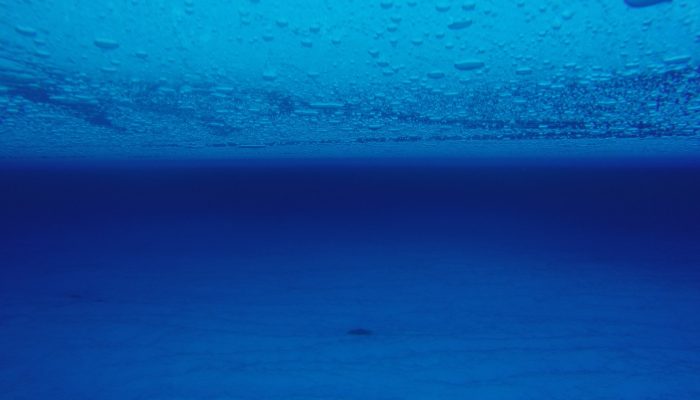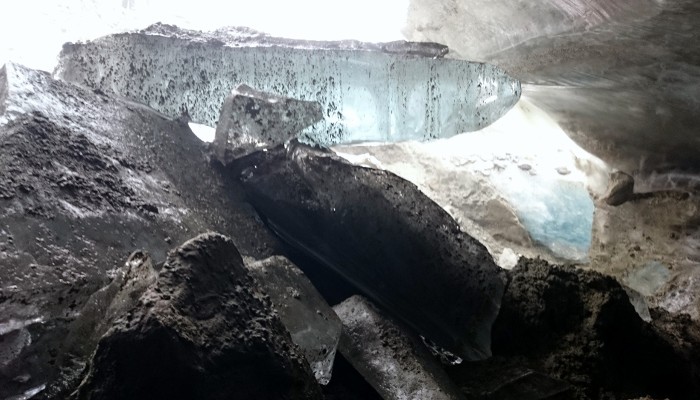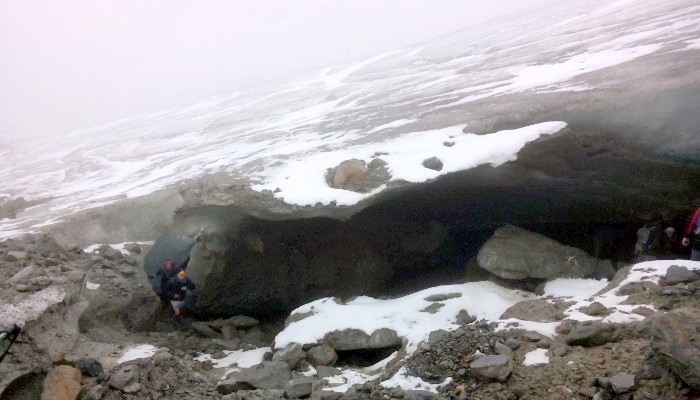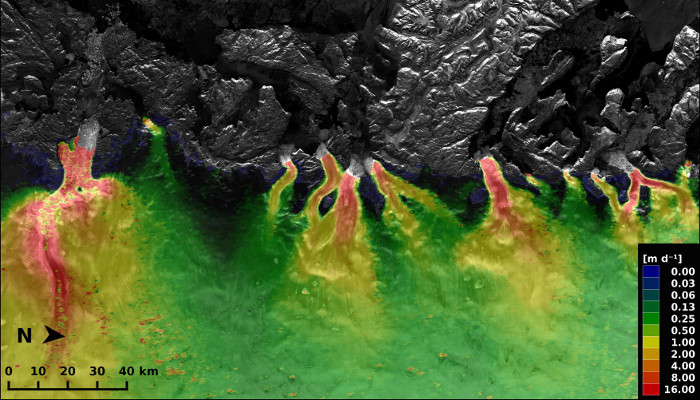Who would have guessed that such a beautiful picture could get you interviewed for the national news?! Certainly not me! And yet, the photo of this englacial lake (a lake trapped within the ice in Antarctica), or rather science behind it, managed to capture the media attention and brought me, one of the happy co-author of this study, on the Belgian television… But what do we see on the pic ...[Read More]
Image of the Week — Historical aerial imagery of Greenland
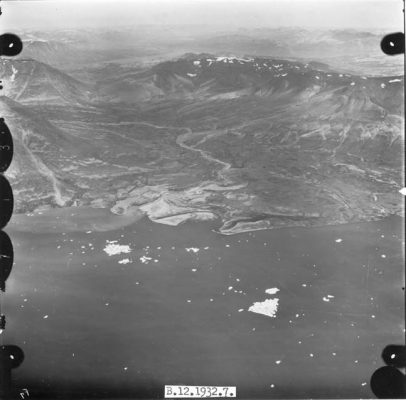
A few month ago, we were taking you on a trip back to Antarctic fieldwork 50 years ago, today we go back to Greenland during 1930s! When geopolitics serves cryospheric sciences The Permanent Court of International Justice in The Hague awarded Danish sovereignty over Greenland in 1933 and besides geopolitical interests, Denmark had a keen interest in searching for natural resources and new opportun ...[Read More]
Image of the Week: Greenland Glacier Seen from a Drone
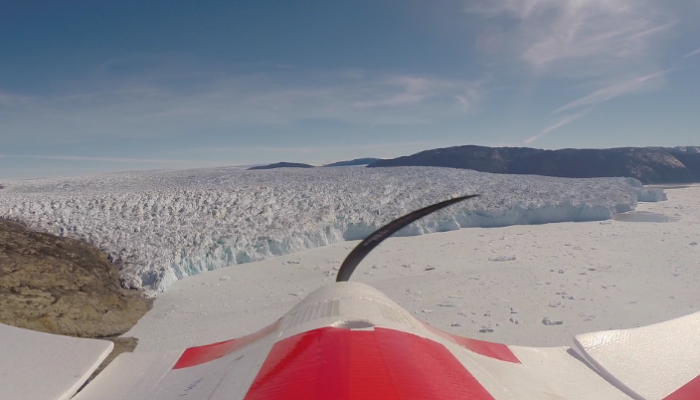
The use of drones or Unmanned Aerial Vehicles (UAVs) is one of the most exciting development in glaciology in recent years. The picture was taken during fieldwork conducted in the summer of 2014 by Johnny Ryan and colleague Nick Toberg. The aim was to survey Store Glacier once a day using a fixed-wing UAV, that was equipped with a digital camera, which took photos every two seconds during its dang ...[Read More]
Image of the Week : 63 years of the Muir Glacier’s retreat
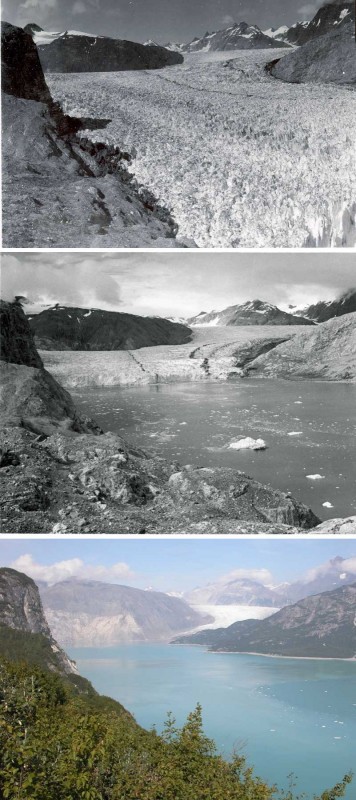
The Muir is a valley glacier (Alaska) that has significantly retreated over the last 2 centuries. The 3 pictures have the same field of view and record the changes that occurred during the 63 years separating 1941 and 2004. In the 1941, the terminus of the glacier is on the lower right corner of the photo. The Muir is then a tidewater glacier up to 700m thick and is well connected to its tributary ...[Read More]
Image of the Week: Under a Glacier
What is happening under a glacier? This is a difficult questions to answer as accessing the glacier bed is usually not that easy. Here, we are getting a rare glimpse of the different processes and materials that are often found at the ice-bed interface. The photograph shows both sediments and hard rock, clear ice and dirty ice, and of course flowing water. No wonder these processes are complicated ...[Read More]
Image of the Week: Hochjochferner
The margin of the glacier “Hochjochferner” on the border between Austria and Italy. This glacier has been monitored with an Automatic Weather Station for several years by the Institute for Marine and Atmospheric research in Utrecth, NL.It is also the destination of the field trip that takes place during the annual Karthaus summer school in ice and climate. Here, students are exploring ...[Read More]
Image of the Week: Greenland Ice Streams
This image is from the west coast of Greenland and it shows several glaciers flowing towards the sea (upper part of the image), transporting ice into the ocean. The colours show the velocity of the ice. As the ice gets nearer to the coast it speeds up reaching speeds over 15m/day. The velocities were calculated using two Sentinel-1A radar scans from 3 and 15 January 2015. You can download a high r ...[Read More]
Only extremes – Babis Charalampidis
– In fieldwork, you have no average. You just have extremes. When Daniel spoke his mind out loud we were facing a bright sunny day coming in from the opening of our tent. We were very glad to see that and ready to engage with our glaciological tasks. Our camp site was at the immediate fore field of the A. P. Olsen ice cap in Northeast Greenland. We had arrived there the previous evening and ...[Read More]
My drone summer – Johnny Ryan

In the summer of 2014, our group at Aberystwyth University and the University of Cambridge decided to pursue an ambitious but exciting field campaign in West Greenland. The aim was to survey Store Glacier once a day using a fixed-wing unmanned aerial vehicle (UAV) (see photo above for a view from the UAV on its way back from a mission with Store Glacier, West Greenland in the background). The UAV ...[Read More]

